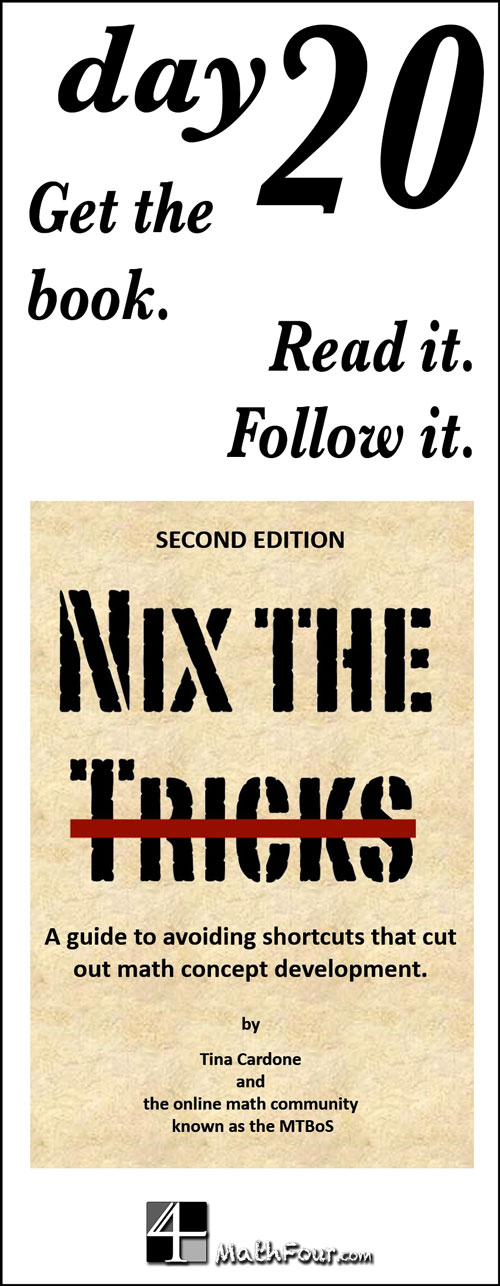This is Day 20 of 31 Days of Math Learning Success. Follow all the days here and check out others that are writing for 31 days here.

Primum non nocere.
(First, do no harm.)
I’m always listening to some book or another on brain and learning stuff. There’s tons of research out there on how we remember.
The big take-away for me has been that memorizing tricks doesn’t work.
Creating your own tricks – based on what you know… THAT works. But it works because you processed the information in new and novel ways. Thus committing it better to memory.
That’s why most people who remember the quadratic formula can’t remember how to complete the square. (Note: you have to complete the square to get to the quadratic formula.)
And even more people don’t remember the quadratic formula.
Because we never really knew what the heck it was for anyway.
Reality exits, stage left.
Science is interesting – anything we talk about, do or “experience” is based in our own reality.
So we can assume a lot of things in science. We don’t have to start with “suppose you live on a planet.”
Which makes us think we get to assume a bunch of stuff in other things, including math.
So that’s the way we talk. We might say, “The Pythagorean Theorem is ![]() .”
.”
Or “The order of operations is PEMDAS.”
Just like we would say, “Gravity pulls on you.”
Two Parts
There are two parts to math stuff, just like there are two parts to science stuff. There’s the “situational part” and the “what’s going on” part.
Science:
The situation is that you are living on a planet. What’s going on is gravity is pulling on you.
Math:
The situation is that you have a right triangle with legs ![]() and
and ![]() and hypotenuse
and hypotenuse ![]() . What’s going on is
. What’s going on is ![]() is the same as
is the same as ![]() .
.
Nixing the Tricks
We need the book Nix the Tricks because we often eliminate the situation from the math stuff.
When we present PEMDAS, we fail to say:
In the case of expressions using real numbers where you only have multiplication, division, addition, subtraction and exponents, along with some parenthesis, we have agreed to do the operations in the order of exponents first, multiplication and division left to right next, and then addition and subtraction left to right last, with alternative orders being designated by parenthesis or brackets.
But all this is necessary. If not, students mess up the order of operations when they have expressions with roots, variables or anything more complex than “just numbers” in numerators or denominators.
But how do you teach a “trick” like this?
That’s the point. You don’t.
So nix the tricks. Buy Nix the Tricks, or download it free. Read it. Follow it.
Are you enjoying the 31 Days of Math Learning Success? Share it on Twitter, Facebook and Pinterest!
This post may contain affiliate links. When you use them, you support us so we can continue to provide free content!








Sorry, comments are closed for this post.